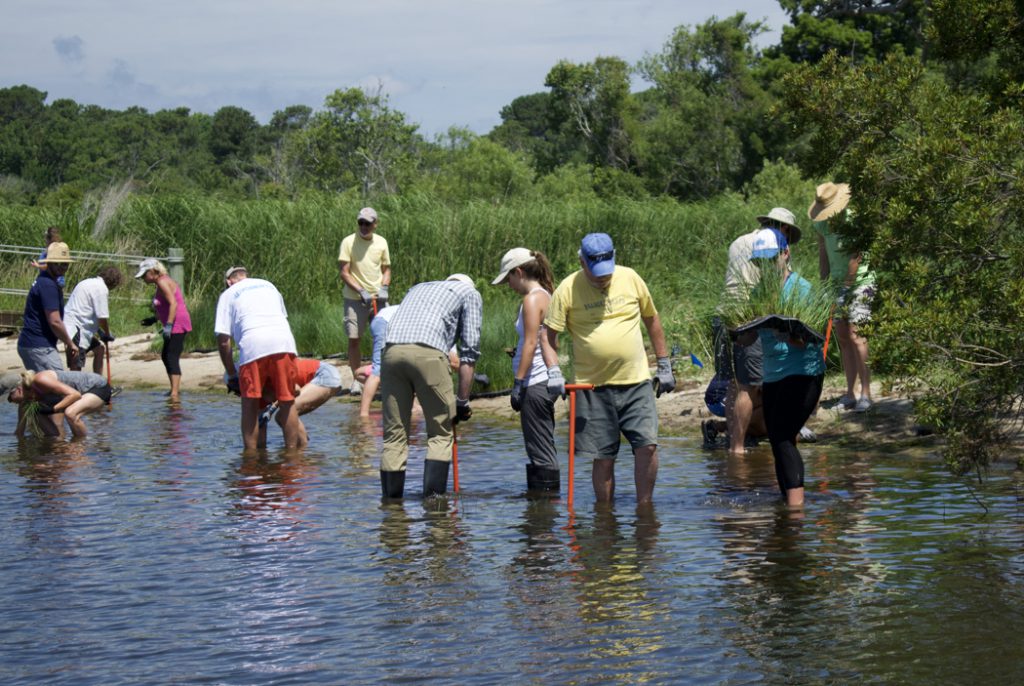
Living shorelines are becoming the new wave of shoreline protection. On the Outer Banks we're seeing more and more of them being put into place.
They are not as quick, easy or cheap to install as a bulkhead, but they have some significant advantages over hardened structures. Mostly, they don't wear out.
More than they don't wear out, they actually restore and renew the nearshore environment of sounds and estuaries.
They are also very effective. Over time, much more effective than a bulkhead.
One of the largest living shoreline projects on the Outer Banks is on Moor Shore Road in Kitty Hawk. The project began late last year in November when sills were put into place about 60' from the shore.
Funded with grants obtained by the North Carolina Coastal Federation, the project is now wrapping up with a few hundred volunteers planing marsh grass.
It's somewhat tedious work. Small plugs of grass—in this case juncus—are put into the ground, either just under water in the shallows or along the beach where it's wet.
The plugs look a lot like plant starts, which is what they are. If there are no extremely high winds over the next few weeks, the grass will be well on its way to being a permanent part of the environment.
The sills, which look solid from the shoreline, actually have slits in them to allow wave energy to be dissipated. What the marsh grass will do is further dissipate that wave energy so that waves do not overwash the shoreline and Moor Shore Road.
The marsh grass is also a favored habitat of a number of breeding fish and will help to maintain healthy levels of seafood.
There is always something interesting happening on the Outer Banks. Stay a week or two with Joe Lamb, Jr. & Associates and discover the world of life on a sandbar.







